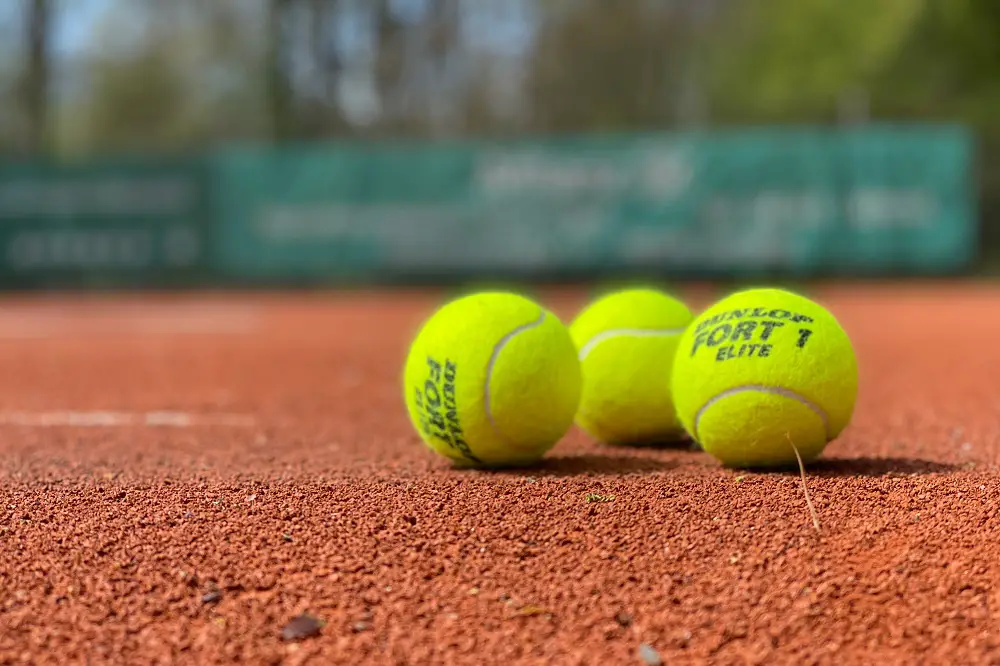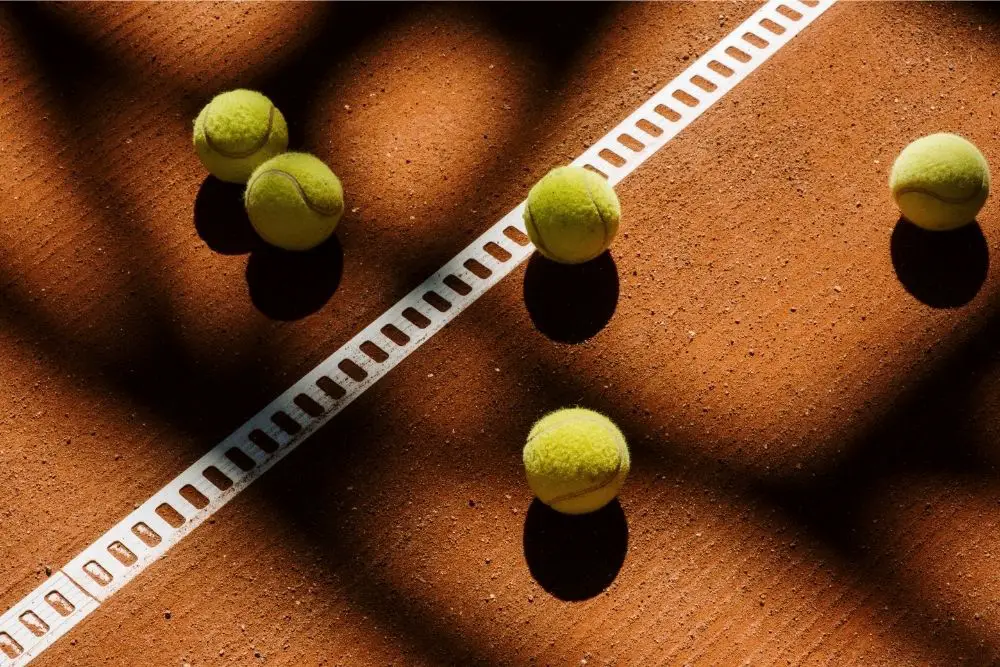Hey! This site is reader-supported and we earn commissions if you purchase products from retailers after clicking on a link from our site.
Tennis balls are one of the central components of tennis equipment, alongside a racket. To put it simply, without them, no game of tennis or training is possible.
Despite their importance, the technical precision of tennis balls is often overlooked amidst some of the more visually striking aspects of the sport such as a player’s technique.

Nevertheless, tennis balls are still expected to perform to an incredibly high technical standard, bouncing and travelling through the air with perfect speed and consistency.
With this in mind, it’s hardly surprising that their manufacture is something of a manufacturing masterclass.
This guide will aim to take a closer look at exactly what’s inside a tennis ball, as well as a detailed explanation of the manufacturing process. We’ll also look to answer a couple of the frequently asked questions!
Structure Of Tennis Ball
A tennis ball has two main components: a ball core and a felt layer. The ball core comprises two hemispheres which are glued together. This is hollow inside and consists of a rubber-like combination of different materials.
The core has a significant influence on the basic playing characteristics of the ball, especially the weight and bounce. The rubber core is filled with either special gas or normal air depending on the type of ball.
On the outside, the ball core is typically surrounded by a protective layer of felt. This layer is hard-wearing for improved durability and also helps to increase the spin properties of the ball.
The yellow/green color of felt is the most popular choice as this provides the ball with the required visibility on the court.
Types Of Tennis Ball
When comparing one tennis ball to another, be mindful that different tennis balls can have different playing characteristics depending on their manufacturing process.
The biggest determining factor is the filling of the ball core. For example, there’s a notable difference between playing with an air-filled tennis ball to a gas-filled one. Furthermore, the pressure and thickness of the rubber core can also have an impact.
Generally speaking, tennis balls can be divided into two distinct categories: pressurized balls and pressureless balls.
Pressurized Balls
These are filled with gas (such as nitrogen) to ensure that there’s a high pressure inside the rubber core. This not only provides you with a very nice playing feel, it also improves the bounce characteristics of the ball.
As such, pressurized balls are often favored in competitions.
Despite the aforementioned benefits, it’s likely that you’ll have to make sacrifices in terms of durability. Pressurized balls have a thin rubber core which means that the gas will escape over time.
Once this happens, the pressure inside the core is reduced and the bounce of the ball will notably worsen as a result.
This offers an explanation to why pressurized balls are always sold in airtight cans. You can recognize these types of can by hearing an audible hissing sound when you open them.
Pressureless Balls
Pressureless tennis balls have air in the core, so unlike their pressurized counterparts, no additional pressure is added by the machine. The two rubber hemispheres are simply glued together under normal air pressure.
The thickness of the rubber core is much greater with these balls, while elastic materials are used in its construction due to the fact that the rubber core alone influences the bouncing potential of the balls.
The biggest benefit of pressureless balls is their extended durability since they’re filled with normal air. As such, no pressure loss can occur.
However, they can be a little heavier to hit due to their thicker core, while they also play slower and don’t bounce quite as high off the ground. This is why pressureless balls are ideal for beginner and recreational players.
The Manufacturing Process

There are a number of steps before a tennis ball makes its way from the factory to the tennis court. For most manufacturers, precision is the top priority, with all balls going through a series of quality checks during production.
This makes the whole process time-consuming and extensive.
As mentioned earlier, natural rubber is used as the base material for the core of tennis balls, with up to 12 additional substances also added to achieve the desired playing characteristics.
Firstly, an extruder mixes all the components and then kneads them until a uniform substance is produced. This mass is then cut into pieces and formed into pellets.
The pellets are placed in a metal mould and pressed together into hollow hemispheres. The material is heated at a temperature of around 150℃ and vulcanised to increase the elasticity of the hemispheres. This, in turn, improves the bounce of the ball.
In terms of the felt, it consists of a mixture of nylon and wool. Combined with cotton threads, the nylon and wool fibres are woven together to create a dense layer and then impregnated.
Next, a machine punches elongated pieces out of the felt and covers their edges with glue. Two of these felt pieces are needed per ball.
Once this has been done, the core can be combined with the felt as the two components are glued together under high pressure. The final step involves the balls being steamed in a special process to expand the felt and subsequently improve the playing characteristics of the balls.
If required, the balls are also printed and then packed into airtight cans.
Frequently Asked Questions
Do tennis balls bounce less in cold weather?
Yes, when a ball gets cold, the gas molecules start to contract inside. This causes the ball to react less when it makes contact with the ground. In other words, less bouncy.
Why are Wimbledon balls kept at 68 degrees?
All balls used during Wimbledon are kept at exactly 68℃ because of the effect of temperature on ball performance. Furthermore, they’re also swapped for a replacement set after the first seven games to make sure they aren’t worn down too much.
Leave a Reply